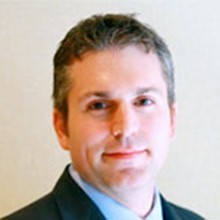Spotlight
David Arons
September 2017

Finding a Cure for Brain Tumors Through Advocacy and Public Policy
Eliminating brain tumors means finding a cure for all tumor types, including ependymoma. To achieve this, David Arons, Chief Executive Officer of the National Brain Tumor Society (NBTS) and its Chief Public Policy and Advocacy Officer, is helping give the brain tumor community a voice.
“We are too small of a community to not be connected,” says Arons. “And we need to be heard because more federal research funding needs to go to brain tumor research.”
Head to the Hill impacts research funding
Since 2012, the NBTS has joined other disease organizations, like the CERN Foundation, at an event called Head to the Hill in Washington, D.C., to advocate to Congress.
“The federal government is the largest funder of biomedical research related to brain tumors,” says Arons. “So we need to encourage Congress and the Administration to increase cancer research dollars.” And he believes their efforts have made an impact.
The overall amount of National Cancer Institute (NCI) funding for brain tumor research has increased from an estimated $140 million in 2012 to an estimated $170 million in 2017, according to Arons.
The Department of Defense (DOD) spending on brain tumor related research has also increased. “A few years ago, pediatric and adult brain tumor researchers were applying for DOD funding from a pool of about $12 million. Now, that pool is $30 million,” says Arons.
Driving childhood cancer legislation and precision medicine
The NBTS is also driving new legislation called the Childhood Cancer STAR ACT. The bipartisan bill is the most comprehensive childhood cancer legislation ever considered by congress.
“The bill gives the NIH [National Institutes of Health] more authority and ultimately more money to collect pediatric cancer biospecimens, which would help the ependymoma community because biospecimens start the research process,” says Arons. Researchers could then develop personalized medicine approaches to collect tissue and understand it, and ultimately develop new treatments.
The legislation also requires the development of survivorship care models to improve the quality of life following treatment.
NBTS has also been advocating to the FDA and NIH to improve clinical endpoints that are the benefits of drugs to patients that clinical trials measure. “To the extent that ependymoma has the same molecular target as other cancers, it would benefit from the target-driven trials that are on-going at the NCI, including the MATCH trials,” says Arons. “So drugs used for other cancers or other diseases, but target the same mutation, could be evaluated on ependymoma patients.”
Creating novel community tools and initiatives
Outside of public policy, NBTS is leading the development of a novel tool to help brain tumor patients identify clinical trials that are appropriate for them. The NBTS Clinical Trial Finder is one such tool to help people easily search clinical trials by tumor type. The NBTS has also recently funded medical research grants to help fund projects focused on low grade brain tumors.
Arons is working with leaders like Mark Gilbert, M.D., and Terri Armstrong, Ph.D., of the NIH, to understand endpoints and identify ways to improve research in rare brain tumors.
“There needs to be standardization around the way clinical trial data is collected,” says Arons. For example, the NBTS formed an international work group to achieve a standard for collecting brain tumor imaging in clinical trials.
“If ependymoma clinical trials are collecting data the same way, researchers across hospitals can compare data,” says Arons. “It may seem granular, but at the end of the day it helps advance research for all tumor types.”
No one with a brain tumor is alone
At the NBTS, Arons says they do things to help the whole brain tumor field. “Our goal is that no one goes through this disease alone,” says Arons. “We want to help patients connect to outstanding medical providers and supportive communities.”
For ependymoma patients, this means collaborating with the CERN Foundation and helping CERN raise awareness. “We were together at Head to the Hill and the butterfly release for Ependymoma Awareness Day,” says Arons. “And we will continue to collaborate to find a cure for all brain tumors.”
